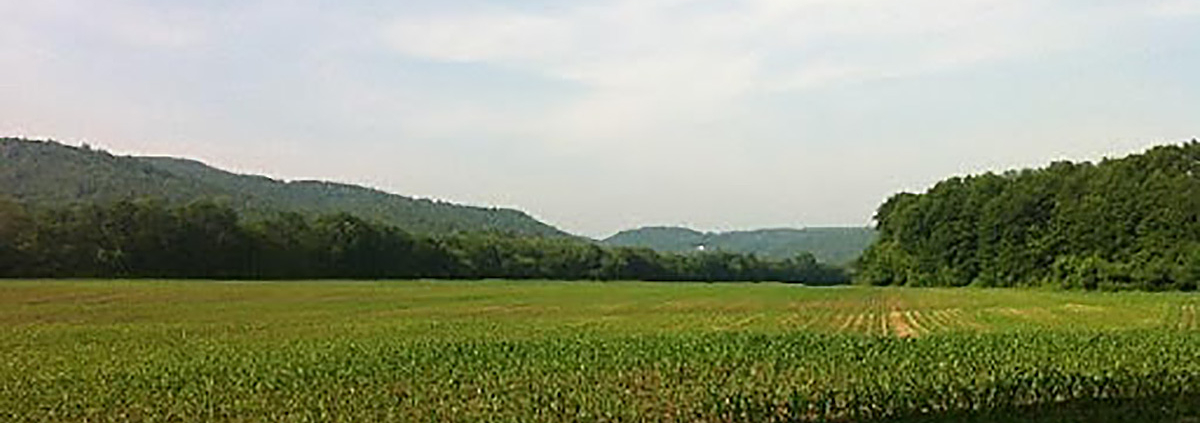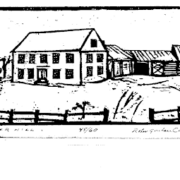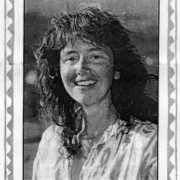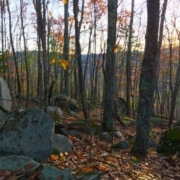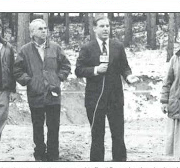Ruth Shumway Made History with Farming and Conservation
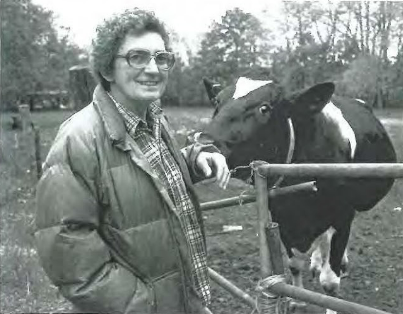
Ruth Shumway on her Hartland Farm in 1989
When Ruth Shumway conserved her Hartland farm in 1990, she was a third-generation farmer who had been farming on her own for more than a decade. Born in 1933, Ruth attended North Hartland elementary schools and graduated from Hartford High School in 1951. She lived in New York state for four years before returning to North Hartland and joining her parents as a partner on the Green Acres dairy farm.
A 1984 Christian Science Monitor story about women farmers described Ruth’s life:
“My day starts at 4:20 a.m. That’s when I get into the barn to help my hired man feed and milk the cows.” Ruth Shumway of Greenacres Farm, a 329-acre establishment that lies along the western bank of the Connecticut River in central Vermont, is describing her daily routine.
”I don’t get back into the house until 9:30 or later,” she continues. ”Then I begin my projects for the day. We start in the barn again about 2:30 each afternoon.”
Mrs. Shumway owns Greenacres Farm, which has been in her family since 1910. With the aid of one hired man, she manages a herd of 190 Holsteins and Short-horns. Ninety of these are milkers, the rest young stock. She works on the farm seven days a week, and only rarely has she ever taken a day off. She has earned a local reputation as a successful farmer, but her life has been anything but easy. ”I run this farm,” says Mrs. Shumway, a widow, ”because I had to do it.”
The history of Green Acres Farm dates back to when Ruth’s grandfather began purchasing land in North Hartland. By the time Ruth conserved it, the farm included 275 acres, with 105 acres of prime bottomland soil and more than a mile of river frontage. Along the river a silver maple floodplain forest included huge old trees. Corn and hay grew in the fertile fields.
During Ruth’s life, electricity, tractors, bulk milk storage tanks, milking machines had come to the farm. Interstate 91 divided forest from fields. Despite innovation, the labor of farming was relentless. There were two fires on the farm, one of which destroyed her home and all possessions. Ruth’s husband, Bud Shumway died in an accident on the farm only four months after their marriage. Ruth earned a reputation in Hartland’s farming community for her commitment to the family herd in the face of adversity. (Valley News, Fate of Farm, 2016)
Ruth was one of the first farmers UVLT worked with – a tough woman who loved her cows. Someone who held the agricultural history of her family, her community and the Shorthorn breed. When she was ready to conserve her farm, the Town of Hartland was ready to help with fundraising and a town appropriation to match a state grant. The summer that Ruth conserved her farm, there was a party with ice cream in the yard of her small home, rebuilt after the fire. We gathered in the shade of the largest black Walnut tree in the state of Vermont – the scene of historic meetings of the Shorthorn Society of Vermont. We rode in hay wagons around the lower fields to the river’s edge. Ruth transferred the 15-acre floodplain forest, with its rare plants, to the Nature Conservancy.
In 1993, Ruth moved Green Acres Farm to Randolph, bringing her herd closer to her family and selling the land that her grandfather had assembled. She kept farming as she aged, pushing her walker to the barn to milk her Shorthorns each morning. After her death in 2008, Ruth’s daughter and son-in-law worked with the Vermont Land Trust to conserve the Randolph farm.

Green Acres farmland in Hartland, conserved by Ruth Shumway in 1990
Today, the Green Acres herd has been dispersed to farms all over the country – one of Ruth’s grandchildren has kept a dozen in northern New York — so the lineage continues and the descendants of Ruth’s cows are sustaining more farms. And Ruth’s property in Randolph is the site of hard work and innovation for another generation. Sophie and Evan Roe – daughter and son of former UVLT staffer John Roe – have their own small herd, which includes a few of the Green Acres bunch. They make flavored butter there, under the name of Green Acres Farm and Creamery.
Ruth’s legacy of generosity and amazing hard work in the face of adversity remains in two conserved farms , a mile of rare floodplain forest protected, and the love and knowledge of agriculture that she nurtured.
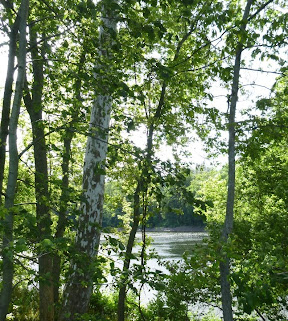
Conservation has come full circle too: Protecting Ruth Shumway’s floodplain forest was one of the first projects that John Roe worked on in Vermont, when employed by the Nature Conservancy. Today his children run a farm and creamery at Ruth’s former farm (also conserved) in Randolph, VT.

